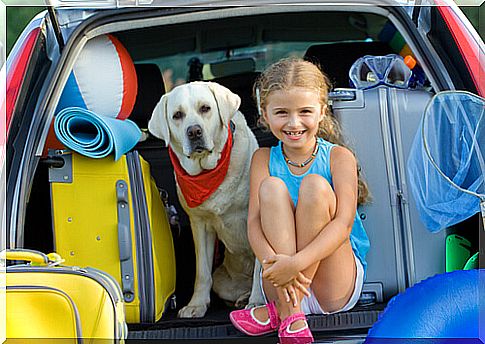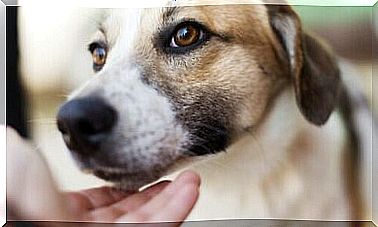Does Your Dog Suffer From Motion Sickness? Here’s What To Do

The scene of the dog sticking his head out the car window and sticking his tongue out is a classic. Taking your pet with you to the end of the world has become a custom these days. For those who live in large cities or in the countryside, it is normal to take the car together with your four-legged friend. But what should you do if your dog suffers from motion sickness?
There are some tips you can follow to keep your pet from suffering and feeling bad. A toy, cuddles or his favorite snack can be the right reward for your very special passenger.
Although motion sickness does not affect all dogs, it is true that it is a fairly common problem. Obviously, the greatest difficulties arise when your dog is still a puppy. Often, in fact, everything passes with the years and the growth of the specimen.
Either way, it’s worth keeping in mind and knowing the reasons why a dog can feel sick when traveling inside a vehicle. As in humans, your pet’s balance has to do with the stability of the inner ear fluid. The movement of the machine can displace this fluid causing it to affect the most sensitive areas of the brain, leading to dizziness.
The psychological factor is very important. If a dog is dizzy in a car or on a plane, anxiety and stress can be the cause. Emotion or shock can activate very delicate areas of the brain. If this is your first time taking your dog in a car, or if they have had a previous negative experience, the effects of this upset are likely to become real motion sickness.
How to tell if a dog suffers from motion sickness?
- Salivation more pronounced than usual and quite visible.
- The dog shows discomfort and unusual attitudes.
- He complains and protests, albeit mildly.
- He yawns a lot.
- It remains motionless.
- He tries to get out of the car and shows some nervousness.
- Urine or defecate.
- He has tremors.
- He barks incessantly.
- Vomits.

What to do if your dog suffers from motion sickness?
- You have to help the dog react positively and get into the car in a fun way, as if it were a game. Therefore, it is advisable to get used to it from the first months of life. Let him get in touch with the car gradually: let him climb inside, place a toy or something familiar so that this new environment appears less challenging.
- Avoid giving him too much food or water before the trip. On a full stomach, he can vomit more easily, so fasting the dog for the previous two hours is necessary .
- One of the things that scares puppies and can make them dizzy is the noise of the vehicle. Get him used to the sounds of the engine – this is an important task if a dog suffers from motion sickness.
- Gradually increase the duration of your walks. It is advisable to start with short rides in the neighborhood of a few minutes and gradually increase the time.
- Bring her favorite toys or her usual blanket. This will give him more calm while running.
- Familiarize him with the space he is in, to make him feel comfortable and safe. A great idea is to constantly talk to him in a calm and reassuring way.
Adjust the temperature and the stops
- Try to maintain a comfortable temperature. No dog likes heating in the car and, even if it is winter, it is preferable to always keep the windows a little open.
- It may be helpful to take a short walk with your dog before getting into the car. You will allow him to get distracted and also to burn off excess energy.

- Avoid using strong perfumes inside the vehicle, such as deodorants or other chemicals that can cause discomfort and headaches for the dog. Remember that the canine olfactory system is much more developed: what we perceive as a slight odor could make the poor animal dizzy.
- If the journey by car is very long, it is good to plan some stops. They will be used to make the dog walk for a while, to do his business and also to drink.
- To avoid sudden movements or braking, always use the safety belt attached to the dog harness.
If none of the above recommendations work, you will need to see your vet. There are medications, such as sedatives and antiemetics, which can be helpful in some severe cases. There are also some pheromone sprays and items that will help your dog get over motion sickness.
Follow these simple tips every time you take the car and decide to bring your four-legged friend with you. These are practical tips that will allow you to make your dog understand the car as something positive. Of course, once you get there, remember the positive reinforcement. Always reward your dog with caresses or treats: he deserves them for sure!









